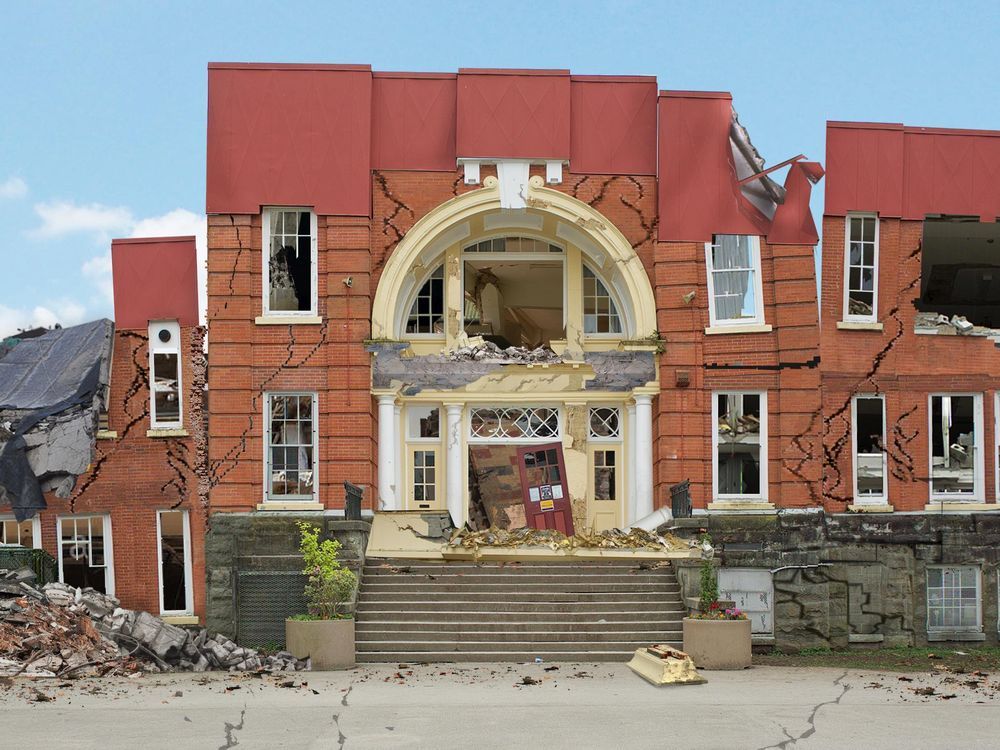Artist rendering of how quake could damage actual Vancouver school conveys seriousness of risk

Credit to Author: Susan Lazaruk| Date: Tue, 03 Dec 2019 22:55:49 +0000
A picture is worth, if not a thousand words, nine percentage points.
Two groups of participants in a University of B.C. study on risk perception viewed evidence of the damage an earthquake can do to a Vancouver elementary school.
One was shown statistical data on how the high-risk, two storey, red brick building without seismic upgrades would be damaged by a quake. A separate group was shown an artist’s rendering of what that would look like, including collapsed roofs and walls, structural cracks and blown-out windows.
The participants were given a chance to sign a petition for fast-tracking seismic upgrades for B.C. schools, and 68 per cent of those offered stats signed the petition, compared with 77.3 per cent of those who had seen the photo.
They also completed a survey on quake preparedness and those who saw the image weren’t more likely than the other group to prepare for a temblor, the study found.
The study was conducted by seismic engineers and psychologists from UBC, and an artist created the image, said Iris Lok, psychology PhD student and lead researcher, in a news release.
The findings were published in the journal Collabra: Psychology.
Iris Lok, a psychology PhD student and lead researcher in a University of B.C. study on risk perception concerning earthquake damage.
Psychology Prof. Elizabeth Dunn suggested the study after sending her child to kindergarten, knowing schools could collapse during a quake, she said.
She said government information about potential perils of quakes are usually presented in “dry statistics” when research shows that risk perception responds better to “gut feelings” from visual data. She said the difference of nine percentage points is “statistically significant” in the study of 400 people, “a pretty big study in behavioural science.”
The results shows that people may be apathetic to the issue of seismic upgrades to schools because they’re not properly perceiving the risks. Dunn said she hopes the study will draw attention to the issue and that parent groups might use it to pressure governments and school boards to complete the repairs more quickly.
Dunn was asked by the school board not to name the school, and she wouldn’t reveal the name publicly, but the school is recognizable in the photo as Lord Tennyson Elementary on Vancouver’s West Side.
“Lord Tennyson will be moving into a newly constructed, seismically upgraded building this summer, and images like the post-disaster image of our school used in this study have only caused distress and anxiety in our community,” the Lord Tennyson PAC communications team, made up of parent volunteers, said in an email. “We believe all students deserve to study in safe buildings, and urge the (Vancouver school board) and provincial government to continue its seismic projects with urgency.”
As of last month, the provincial seismic mitigation program said that of the 490 schools needing upgrades, 171 were completed, 15 were under construction, 27 were proceeding to construction and 30 were in business-case development, leaving 247 schools as “future priorities.”
The B.C. Teachers Federation is calling for all schools to be upgraded by 2025.